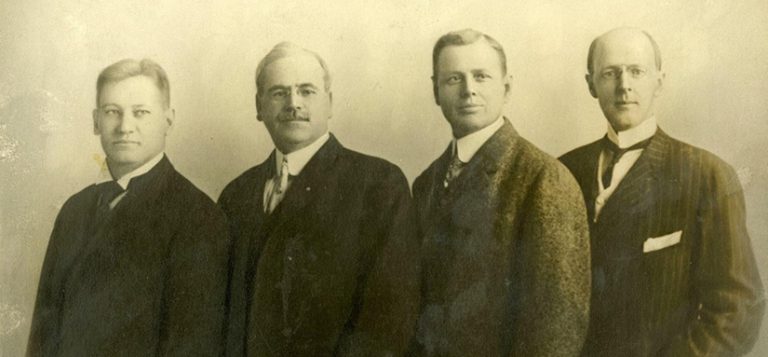Rotary International
History of Rotary International

Paul P. Harris, an attorney, wanted to create a professional group with the same friendly spirit he felt in the small towns of his youth. On 23 February 1905, Harris, Gustavus Loehr, Silvester Schiele, and Hiram Shorey gathered at Loehr’s office in Room 711 of the Unity Building in downtown Chicago. This was the first Rotary club meeting. They decided to call the new club “Rotary” after the practice of rotating meeting locations.
Within five years clubs had formed across the country, from San Francisco to New York.
The Four-Way Test

In 1932, Rotarian Herbert J. Taylor created The Four-Way Test. The test, which has been translated into more than 100 languages, asks the following questions:
Of the things we think, say or do
Is it the TRUTH?
Is it FAIR to all concerned?
Will it build GOODWILL and BETTER FRIENDSHIPS?
Will it be BENEFICIAL to all concerned?
Rotary International as a global organization unites leaders from all continents, cultures, and occupations to exchange ideas and take action in communities around the world.
Rotary International’s collective leadership and expertise of 1.2 million members helps tackle some of the world’s biggest challenges, locally and globally. It’s members worldwide are united by common values and vision for the future as they sharpen their focus with targeted specific causes that will reach communities most in need.
The guiding principles of Rotary International have been developed over the years to provide Rotarians with a strong, common purpose and direction. They serve as a foundation for it’s members relationships with each other and the action which is taken in the world.
The Object of Rotary is to encourage and foster the ideal of service as a basis of worthy enterprise and, in particular, to encourage and foster:
- FIRST: The development of acquaintance as an opportunity for service;
- SECOND: High ethical standards in business and professions; the recognition of the worthiness of all useful occupations; and the dignifying of each Rotarian’s occupation as an opportunity to serve society;
- THIRD: The application of the ideal of service in each Rotarian’s personal, business, and community life;
- FOURTH: The advancement of international understanding, goodwill, and peace through a world fellowship of business and professional persons united in the ideal of service.
The five Avenues of Service, which are the foundation of Club activity through which Rotarians worldwide channel their commitment to service at home and abroad are:
Club Service focuses on making clubs strong. A thriving club is anchored by strong relationships and an active membership development plan.
Vocational Service calls on every Rotarian to work with integrity and contribute their expertise to the problems and needs of society.
Community Service encourages every Rotarian to find ways to improve the quality of life for people in their communities and to serve the public interest.
International Service exemplifies global reach in promoting peace and understanding. This service avenue is supported by sponsoring or volunteering on international projects, seeking partners abroad, and more.
Youth Service recognizes the importance of empowering youth and young professionals through leadership development programs such as Rotaract, Interact, Rotary Youth Leadership Awards, and Rotary Youth Exchange.
The mission of Rotary International is to provide service to others, promote integrity, and advance world understanding, goodwill, and peace through its fellowship of business, professional, and community leaders.
Rotary International recognizes the value of diversity within individual clubs. Rotary encourages clubs to assess those in their communities who are eligible for membership, under existing membership guidelines, and to endeavor to include the appropriate range of individuals in their clubs. A club that reflects its community with regard to professional and business classification, gender, age, religion, and ethnicity is a club with the key to its future.